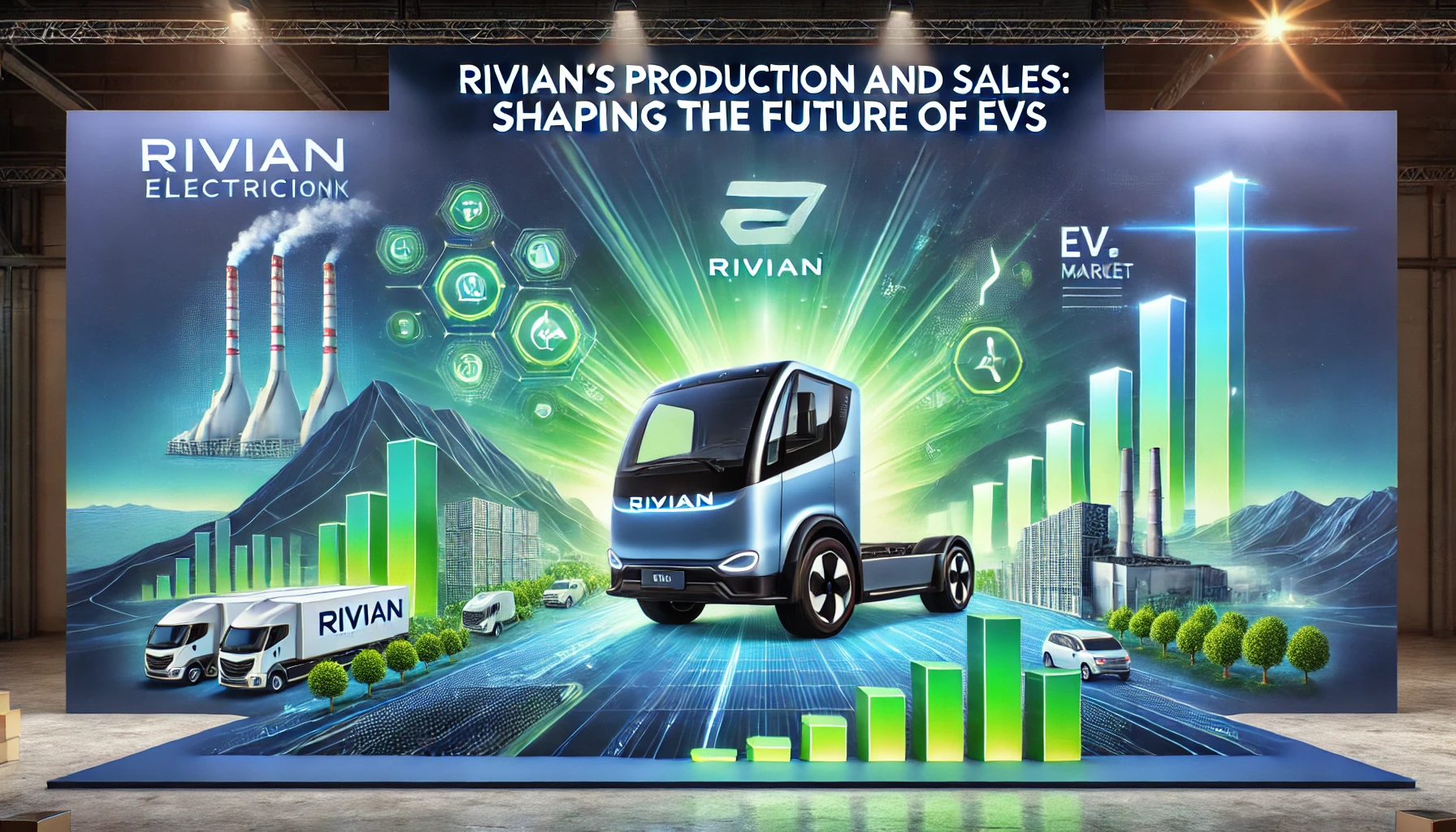How Rivian’s Production Updates and Sales Performance are Shaping the Future of EV Manufacturing
In the ever-evolving world of electric vehicles (EVs), Rivian has positioned itself as one of the most promising players. Known for its innovative designs and bold ambition, Rivian aims to carve out a significant market share alongside Tesla and other industry leaders. As Rivian’s production update rolls in, the spotlight is now on how this growing automaker is managing its production capacity, improving its profitability, and ramping up sales to meet the increasing demand for its R1 models. In this blog, we’ll explore Rivian’s latest production updates, sales performance, and how its production targets and strategies are reshaping the EV industry.
Rivian’s Latest Production Update: Gearing Up for Growth
Rivian’s latest production update signals significant growth and ambition for the company. As of mid-2024, Rivian has been steadily increasing its production capacity, with its plant in Normal, Illinois, producing over 13,000 vehicles in the first half of the year(Electrek)(Inside EVs). This number, however, comes after a brief slowdown due to planned factory upgrades aimed at boosting future production efficiency. These upgrades will help the company meet its goal of producing 57,000 vehicles by the end of 2024.
Rivian’s focus on optimizing production is clear. The company has reduced the number of components in its vehicles, eliminated unnecessary steps in the battery-making process, and incorporated in-house drive units to lower costs by nearly 50%(Electrek). With these changes, Rivian has not only ramped up the speed at which it can produce vehicles, but it has also significantly reduced production costs.
Rivian’s Production Target for 2024
A key aspect of Rivian’s long-term strategy is its ambitious production target of 57,000 vehicles in 2024(Electrek). To achieve this, Rivian is focusing on increasing efficiency at its factories, introducing new technologies, and working closely with suppliers to secure parts. The production ramp-up has been supported by Rivian’s investment in automation and streamlining of manufacturing processes.
By the end of 2024, Rivian expects to exceed this target, laying the foundation for the launch of new models, including the highly anticipated Rivian R2 vehicle release. This will further solidify Rivian’s foothold in the EV market, where competitors are also scaling their production efforts.
Rivian R1T Sales Performance: A Market Snapshot
The Rivian R1T, an all-electric truck, has been one of the brand’s standout products. With its rugged design, off-road capabilities, and electric powertrain, the R1T has captured the attention of consumers looking for eco-friendly alternatives to traditional trucks. However, Rivian’s sales performance has been a mixed bag. While demand for the R1T remains high, supply chain issues and production delays have made it difficult for Rivian to meet that demand(Electrek)(Inside EVs).
Rivian R1T Sales in 2024
Despite these challenges, Rivian R1T sales have been growing steadily. In the second quarter of 2024, Rivian delivered over 10,000 R1T units to customers, a significant improvement compared to the previous year(Inside EVs). As production ramps up, Rivian aims to capitalize on this demand and boost its market share in the competitive EV truck segment.
Future Projections for Rivian Sales
Rivian’s long-term sales outlook is positive, especially with the upcoming Rivian R2 vehicle release. This model is expected to be more affordable than the R1T, opening up new markets and allowing Rivian to attract a broader customer base. Rivian’s ability to scale production will be key to meeting the high demand for both the R1T and the R2.
Rivian’s Profitability and Financial Performance: On the Road to Success?
One of the most critical aspects of Rivian’s growth strategy is achieving profitability. While Rivian has shown promise with its innovative vehicles, its financial performance has been under scrutiny, particularly due to significant production costs and operational expenses. However, Rivian’s leadership remains confident that the company will soon achieve a positive profit margin.
Rivian Profit Margin: A Work in Progress
At present, Rivian is operating at a loss, primarily due to the high cost of production and the scale of its ongoing expansion efforts. In Q2 2024, the company reported a loss of over $1.4 billion(Electrek). However, Rivian is confident that with its cost-cutting measures and increased production efficiency, it will begin to see a positive profit margin by the end of 2024(Electrek)(Inside EVs). Rivian has already started seeing improvements, with the company reducing its loss per vehicle by over 15% in the past year(Electrek).
Rivian’s Financial Performance: Looking Ahead
Although Rivian’s financial performance has been marked by heavy losses, the company has a solid cash position, with over $9 billion in liquidity at the end of Q2 2024(Electrek). This financial cushion gives Rivian the flexibility to invest in further production capacity, new technologies, and market expansion. The upcoming Rivian R2 vehicle release is expected to help Rivian achieve profitability sooner, as this model will be more affordable and appeal to a wider range of consumers.
Rivian’s Earnings Report and Stock Forecast: What’s Next?
Investors are keenly watching Rivian’s performance, and the company’s earnings report has been a key metric of its progress. Despite posting significant losses, Rivian has consistently met or exceeded Wall Street’s expectations for revenue growth(Electrek). For Q2 2024, Rivian reported $1.15 billion in revenue, slightly higher than expectations(Electrek).
Rivian Stock Forecast: A Bright Future?
While Rivian’s stock has experienced volatility, analysts remain optimistic about the company’s future. As production ramps up and Rivian works toward profitability, the Rivian stock forecast points to potential growth in the coming years. The company’s ability to meet production targets, expand into new markets, and improve its financial metrics will be critical in determining the stock’s long-term performance.
In particular, the launch of the Rivian R2 is expected to drive both sales and investor confidence. The R2, with its lower price point and innovative features, is likely to attract a broader audience and further enhance Rivian’s standing in the EV market.
Rivian’s Impact on the EV Industry
As Rivian’s production update and latest earnings report show, the company is on the cusp of significant growth. With its focus on increasing production efficiency, expanding its lineup with the Rivian R2 vehicle release, and working toward a positive profit margin, Rivian is well-positioned to become a leader in the EV industry. Despite challenges, including supply chain disruptions and high production costs, Rivian’s commitment to innovation and sustainability makes it a key player in the future of electric vehicles.
As the company continues to improve its financial performance and scale its operations, both consumers and investors have plenty to look forward to. Whether you’re an EV enthusiast, a potential investor, or simply curious about the future of electric trucks, keep an eye on Rivian as it charges ahead.
For more insights into the future of electric vehicles and the impact of sustainability on industries, visit Regent Studies. For further details on Rivian’s latest earnings and updates, check out this comprehensive report from a trusted industry source.



